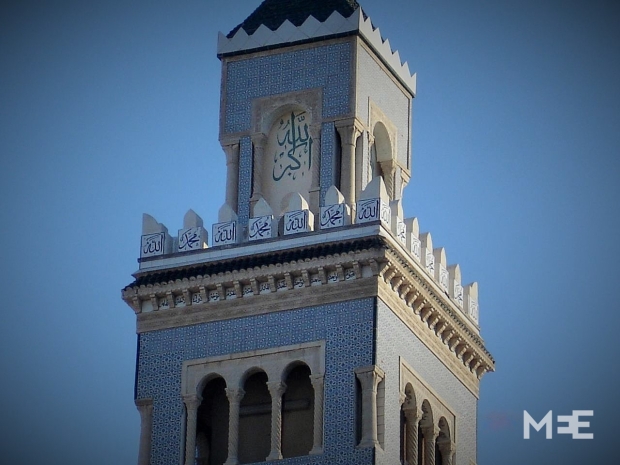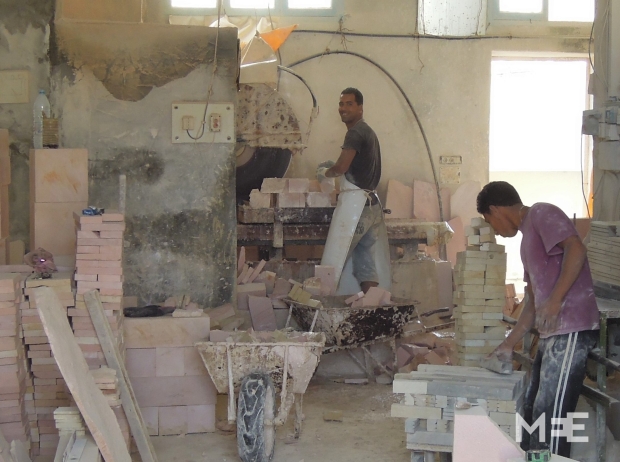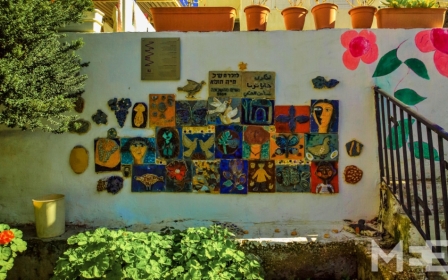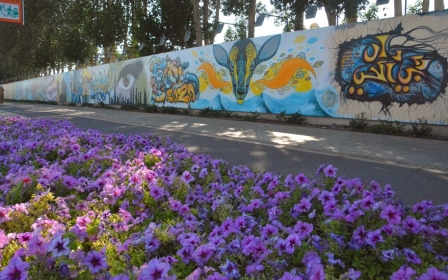The Tunisian stone carver of Dar Chaabane
Nabeul, Tunisia - Rising above all other buildings on the horizon, the stone minaret of the local Dar Chaabane mosque dominates the line of sight. Covered with intricate Islamic carvings, which blend together into beautiful geometric patterns, the white minaret is both stunning from afar and up close.
Dar Chaabane itself sits on the Mediterranean coast of Tunisia, which is also home to some of the greatest Roman ruins in the world.
Archaeologists recently discovered Phoenician artefacts buried underneath these Roman sites. Vulnerable to the elements, the past splendour of these ruins has been eroded away over the thousands of years they have stood. Nowadays, Tunisians and visitors are only able to see a fraction of the Roman structures, but the stone-carving industry in Dar Chaabane makes sure that ancient styles never go out of fashion in Tunisia.
A suburb of the beach city of Nabeul, in the Cap Bon region of Tunisia, Dar Chaabane is packed with a huge variety of stone decorations.
For thousands of years, residents of the town have carved designs into stone for both artistic and practical purposes. Roman columns decorate house entrances, stone carvers combine ancient architecture with modern technology to create stone barbecues, even handrails are inspired by those used in ancient Carthage, the great Phoenician city founded in 814 BC.
In the present day, Dar Chaabane stone carvers prefer styles which combine Phoenician and Roman influences with Islamic designs, creating a mélange reflective of the ethnic and cultural diversity of Tunisia.
Although not as diverse as it once was, Dar Chaabane hosts holidaymakers from Europe throughout the year. The stone-carving industry helps Dar Chaabane maintain these links with Europe as the vacation homes are exquisitely designed with stone carvings.
Al Hedi “Habib” Mehrez entered the stone carving industry in the early 1940s because the death of his father, the breadwinner of his family, meant he had to drop out of school at 10 and begin working in a factory.
After World War II ended, Habib spent more time in the factory and was later employed by the Ministry of Infrastructure. In his work with the ministry, Habib used his knowledge of the ancient art of stone carving in the modern construction of Borguiba government-funded works projects, making stone-carving designs a common sights in the public sphere.
Habib’s son, Abdelkarim Mehrez, did not follow the same path as his father and at age 10, he was still playing with friends and spending time at the beach. In the early 1980s, he worked as a disc jockey at nightclubs and beach resorts in Hammamet, the Tunisian town known for its vibrant tourist scene.
He finally joined his father’s factory workforce in 1986. After spending years working with him, Abdelkarim finally opened his own factory and now continues the Mehrez family stone carving lineage.
Now Abdelkarim’s work can be seen throughout the Mediterranean, in homes as far as France and Italy, and in locations as near as Tunisian mosques and his own home fireplace.
Although many clients assume Abdelkarim’s work is intensely artistic, he does not consider himself an artist. At the age of 54, he still views the work “as solely a trade and business,” even though the actual cutting and carving process requires exact measurements and an artistic eye for the latest designs.
Due to the demanding process, he works long hours, always labouring away in the factory on Saturdays and Sundays, depending on the market demands.
In Dar Chaabane he is not unique in this regard, as its residents are known for having strong work ethics. In fact, although present-day Tunisia is riddled with unemployment, Dar Chaabane residents are keeping themselves afloat. Retired construction worker Mohamed Batout attributes this to the fact that locals just “prefer to work. As long as there is a job to do, they will do it”.
In spite of this strong work ethic, Dar Chaabane’s stone carving industry faces its own challenges. According to Abdelkarim, “the stone carving industry is tied to everything. When tourism is down, so are orders for designs from hotels and construction firms”.
After the attacks against tourists at the Bardo Museum and a beach resort in Sousse, the tourism industry has been floundering. Hotels around the country, once filled to the brim with European tourists, now only host summer vacationers from neighbouring Algeria and domestic vacationers from different regions of Tunisia.
Since the Sousse attack, scores of Tunisian hospitality workers have also lost their jobs. As demand dries up in the hotel sector, the stone-carving industry faces similar difficulties.
Even with these issues, Abdelkarim is happy to have his own business and work only for himself. In addition, for the past two years, he has been able to teach the trade to his 25-year-old son, Hamza. Trained as an engineer, Hamza will soon continue his studies in France, and will not continue the family stone-carving business. In spite of his son’s impending departure, Abdelkarim remains happy.
“I am my own boss, with my own business. That’s special,” he said. Furthermore, through his work, he transmits the ancient stone-carving craft to modern-day Tunisia. In that sense, his job is an important one and he is proud to be doing it.
New MEE newsletter: Jerusalem Dispatch
Sign up to get the latest insights and analysis on Israel-Palestine, alongside Turkey Unpacked and other MEE newsletters
Middle East Eye delivers independent and unrivalled coverage and analysis of the Middle East, North Africa and beyond. To learn more about republishing this content and the associated fees, please fill out this form. More about MEE can be found here.







